Worm Castings Problems: What Do Worm Casting Mounds Look Like In Lawns
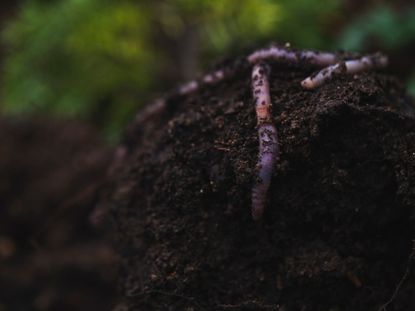

Worms are more than slimy fish bait. Their presence in our soil is crucial to its health and nutrient level. Lawn worm castings are the result of these organisms eating and processing detritus and organic debris. However, worm mounds in yard and garden areas can be annoying and make holes in turf grass. In order to manage these piles of castings, it is important to answer the question, “What do worm casting mounds look like?” Once you are armed with a bit more information, you may decide that worm castings problems are worth living with when compared to the benefits they provide for your garden.
What Do Worm Casting Mounds Look Like?
If you have small, quarter sized piles of dirt in your yard or garden, you are lucky! Worms eat organic garbage and excrete it out as nutrient rich castings. Their activities increase the tilth and overall health of your soil. The little domes of soil are proof you have a large populations of beneficial earthworms. Their tunneling activities aerate the soil and bring oxygen to plant roots. The tunnels also increase the percolation and water penetration of soil and sod.
Worm Castings Problems
The nutrients in worm castings are important for plant growth. Worm mounds in yard areas are more of a problem than those in garden beds. Worm mounds in soil are just concentrated nutrients and cause no harm to most plants. Worm castings in lawn areas, however, cause more of an issue. They make the turf lumpy and uneven, and the grass around the area yellows and dies. This is due to the extreme concentration of nutrients, which burn the grass. The gardener who desires perfect green grass will find lawn worm castings annoying but the benefit to the entire garden may outweigh the desire to eradicate the worm population.
Removing Worm Castings in Lawn
The little mounds may pose a tripping hazard and small dead spots in the lawn destroy the beauty of a well cared for grassy area. If these details send you over the edge and you need to kill the earthworm population, think twice! There are chemicals you can use to kill worms, but they generally kill other beneficial soil organisms too. You can use a heavy roller to smooth out the hills and then core aerate to decrease the compaction. Worm mounds in yard sites can also just be knocked over with a rake. Spread out the nutrient rich casting to benefit more of the sod area and prevent the concentrated burning. If you want to minimize worm activity on the surface of the soil, reduce watering. Moisture is attractive to the worms and they are busiest when soil is soggy. The best and easiest idea is to just sit back and enjoy the work of these wonderful organisms and the benefits they bring to the rest of your garden.
Gardening tips, videos, info and more delivered right to your inbox!
Sign up for the Gardening Know How newsletter today and receive a free download of our most popular eBook "How to Grow Delicious Tomatoes."

Bonnie Grant is a professional landscaper with a Certification in Urban Gardening. She has been gardening and writing for 15 years. A former professional chef, she has a passion for edible landscaping.
-
 26 Different Types Of Orchids – With Pictures & Information
26 Different Types Of Orchids – With Pictures & InformationDiscover stunning orchid types to grow in your home and garden – from easy beginner varieties to rare and exotic species that are the preserve of experts.
By Melanie Griffiths
-
 Urban Composting Guide: How To Compost In The Middle Of The City
Urban Composting Guide: How To Compost In The Middle Of The CityUrban composting does not have to be daunting. You can compost in the city, and maybe even try some urban worm composting!
By Mary Ellen Ellis
-
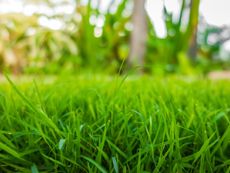 Sustainable Turf Species For A Greener Lawn
Sustainable Turf Species For A Greener LawnClick here for some of the most sustainable types of turf grass you can grow for an eco-friendly lawn.
By Bonnie L. Grant
-
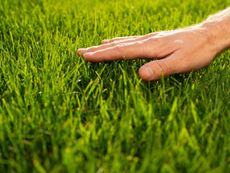 How To Grow A Sustainable Lawn
How To Grow A Sustainable LawnAdjust your thinking about a perfect green lawn and consider more sustainable methods. Click here to learn how.
By Mary Ellen Ellis
-
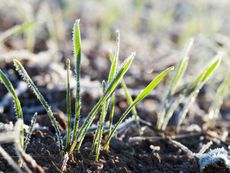 Will Frost Kill Grass Seed And How To Help New Turf Survive
Will Frost Kill Grass Seed And How To Help New Turf SurviveLearn how to help your newly sown grass survive frost and freezing weather.
By Amy Grant
-
 Lawn Problems That Aren’t Really Problems
Lawn Problems That Aren’t Really ProblemsYour lawn may not require as much work as you think. Learn which common problems aren’t really problems.
By Teo Spengler
-
 Why A Manual Push Mower Is Good For You And The Environment
Why A Manual Push Mower Is Good For You And The EnvironmentReel mowers are making a comeback, but why? Click here to learn about reel mower pros and cons.
By Amy Grant
-
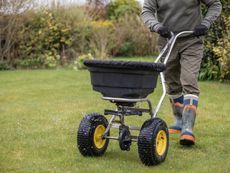 Fertilize Grass In Fall For A Lush Lawn In Spring
Fertilize Grass In Fall For A Lush Lawn In SpringFor everything you need to know about fertilizing your lawn in the fall, click here.
By Susan Albert
-
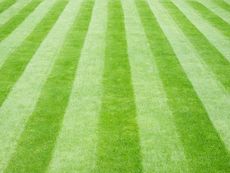 Tips For Mowing Stripes In Lawn
Tips For Mowing Stripes In LawnWouldn’t it be great to have stripes in your lawn like a sports field? Learn how here.
By Susan Albert
-
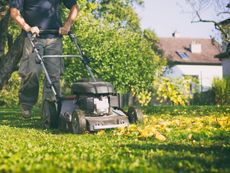 Late Summer Lawn Care Checklist
Late Summer Lawn Care ChecklistPlan to do some late summer care and maintenance of your lawn so it will be healthy and beautiful in the spring. Here are some tips.
By Laura Miller